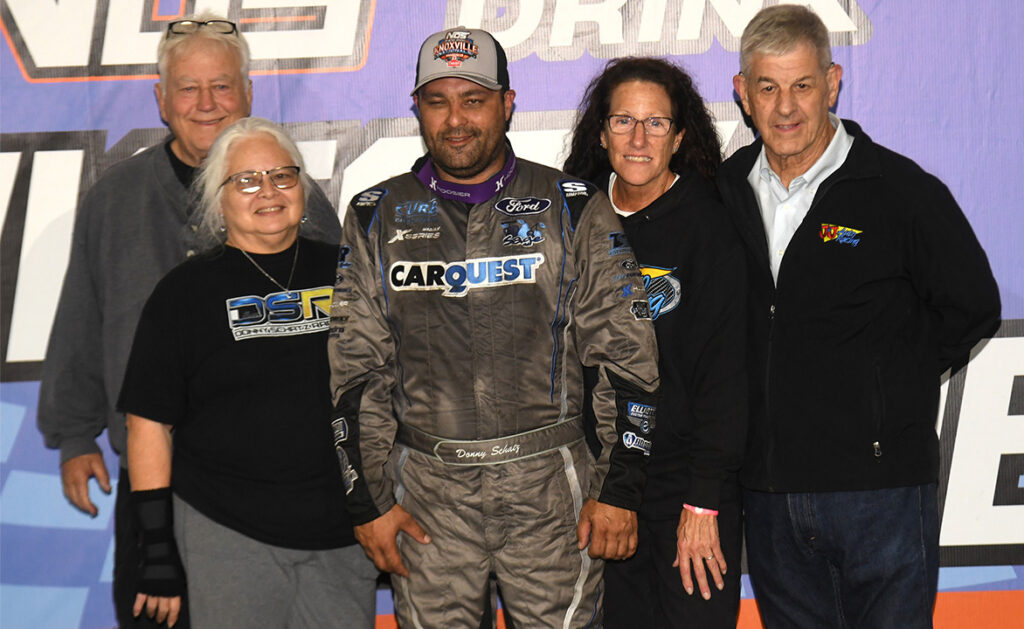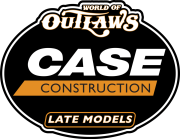Riding waves off the coast of California, Ron Shaver was content living life on the beach. Then, he decided it was time to go to work.
That decision amounted to a Hall of Fame career as one of the most prominent and successful engine builders of all time in Sprint Car racing.
His accolades are on par with any racing legend: 10 World of Outlaws Sprint Car championships, 12 Knoxville Nationals titles, hundreds of World of Outlaws wins, United States Auto Club (USAC) titles and more.
“I lived at the beach for 20 years and then I decided to go to work,” Shaver said with a chuckle. “I picked a job where I could go to work where I played.”
His passion for building a quality product was born from the Shaver Specialty Company, opened by his grandfather, George Shaver Sr., in 1936. The shop built commercial meat- and vegetable-cutting machinery – a product Shaver’s business continues to produce today for companies like In-N-Out Burger and Wing Stop. But even more appealing than french fry cutters were the engines being built next door at the Offenhauser shop.
Offenhauser was an engine manufacturer that spent about 50 years building motors for American open-wheel race cars, such as Midgets, Sprint Cars and Indy cars. The company gained notoriety with its dominance at the Indianapolis 500, seeing an Offenhauser engine power a car to victory 27 times from 1934 through the 1970s.
Taking his experience in machinery and passion for engines and Sprint Car racing, Shaver forged a successful career of his own.
While he had the skills to build a good engine, it took long days and sleepless nights with fellow Hall of Famers, Kenny Woodruff and Karl Kinser, to teach him what it would take to be successful with the World of Outlaws.
“All the things that I learned… came from Karl Kinser or Kenny Woodruff,” Shaver said. “They liked me [and former Donny Schatz crew chief, Ricky Warner], so they took us under their wing.”
He knew how to give them a good engine, but it took working with them to learn how give drivers with varying styles an engine that would work for them.
“Woodruff would go out, make two laps and say, ‘The car is no good, we’re not going to win nothing,’” Shaver said. “Karl would go out there… Karl was more aggressive. He’d go out there, beat on it, chain it up, or do whatever he needed to do to get him to win. Woodruff, he would just wait for the next race. They were characters.”
In addition to engine lessons, Shaver said the most important thing he learned from Kinser and Woodruff was work ethic – at the Outlaw level.
“They never quit,” he said. “We would get to a hotel at three in the morning and they’d go, ‘OK, we’re going to sleep for a while.’ I’d lay down and [Woodruff] would knock on the door. ‘Come on, we need to go.’ I said, ‘Where are we going?’ He said, ‘We have to work on the car. We’re going to race tomorrow night.’ I said, ‘What are we going to do?’ He said, ‘I’ll show you.’ And off we go working on the car. No sleep. I don’t know how he did it. Those guys were the last ones out of the pits. They were always working on something.
“They literally built the World of Outlaws single-handedly. They always had the best drivers and that’s what the people come and see. And it’s getting back that way. That’s what I really like about it.”
Like his career, Shaver has seen Sprint Car engines evolve with time. From 390 pounds to about 325 pounds. From 400hp to nearly 950hp.
The evolution of the Sprint Car engine stemmed from limited directions of where to go with the heads and lower section. So, with that, parts became lighter and stronger steel was utilized.
“We have an aluminum block that has been completely revamped over 30-35 years,” Shaver said. “So, it’s really a bullet proof block. Unless you throw a rod out of it, you’re not going to lose one. We worked with different pistons and different rods. They’re almost the same anymore.”

In addition to the evolution of the engine itself, Shaver has seen the evolution of different manufactures with the World of Outlaws. While there’s no longer a direct manufacture tie, Chevrolet has been a mainstay in Sprint Car racing for more than 40 years as the Chevy block is the base engine block most Sprint Car engines are based off and the block Shaver has worked with since he started building engines. But he also helped bring Ford into the World of Outlaws with Dave Blaney and Woodruff in the late 1970s-early 1980s and is doing so again with Ford’s current FPS 410 engine.
With there now being Ford, Chevrolet and Toyota engines in the World of Outlaws, Shaver said he’s seen positives from the increased manufacture support in Sprint Car racing. And he anticipates seeing even more in the future.
“I think it’s good for the sport because they have money,” Shaver said. “It’s like Ford, there are so many Ford fans that never came out to the races. Now, they’re all there and they’re like, ‘This is great!’”
Ten-time World of Outlaws NOS Energy Drink Sprint Car Series champion Donny Schatz powered one of Shaver’s FPS 410 engines to Victory Lane at the Knoxville Nationals in 2022 – his 11th Nationals title and Shaver’s 12th. If Schatz can win the Knoxville Nationals this year, he’ll tie Steve Kinser for the most and push Shaver to more Nationals wins than Karl Kinser – a feat the former Kinser protégé said he’d like to accomplish.
“It’s kind of gratifying,” Shaver said about his engines winning multiple big events. “It gratifies your hard work. It makes everyone happy. I remember Don when he lost that last one… He wasn’t real happy. Made him step up.”
From the waves of the Pacific Ocean to the tsunami of success in Sprint Car racing, Shaver has been surfing on passion for more than 70 years. He knows a time to slow down may be on the horizon, but there’s still work to be done. He has another Knoxville Nationals to win.
To see Shaver’s engines in action with the World of Outlaws NOS Energy Drink Sprint Car Series, get tickets at WorldofOutlaws.com/tix.
If you can’t make it to the track, you can watch every lap live on DIRTVision.














